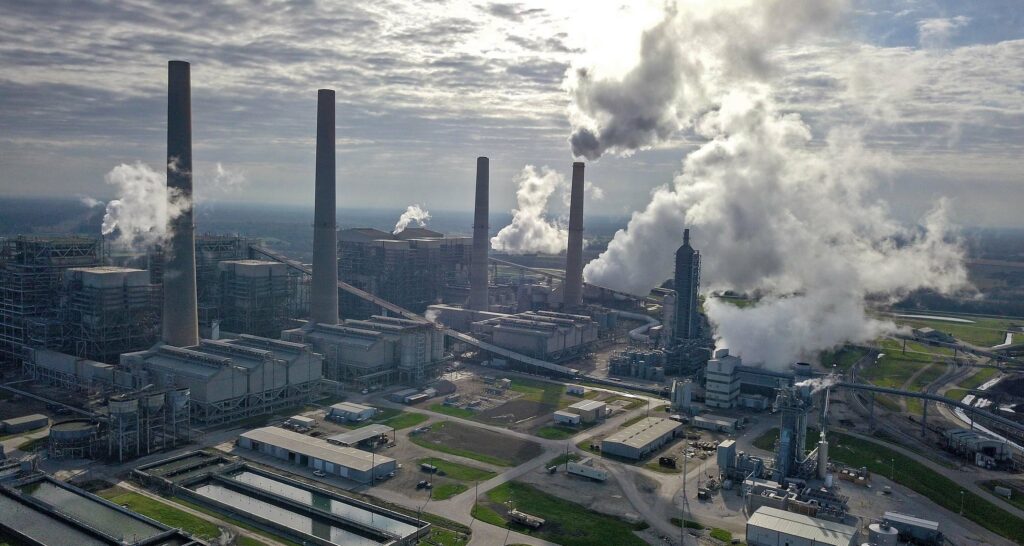Carbon capture and storage: smokescreen, white elephant, or linchpin?
After decades of research, CCS has delivered only small carbon savings and has largely been utilized to extract more fossil fuels. But with most mitigation pathway models including CCS, what are its prospects – and ramifications?
Environment — Global

Carbon capture and storage (CCS) is one of the key decarbonization technologies, yet it is a highly controversial topic. This is most noticeable in the discrepancy in both the literature and roadmaps about the role of CCS in achieving carbon neutrality. Several pages are needed to explain the background to this conflict, but in this short article we aim to clarify the different standpoints.
For simplification, the industrial and power sectors consume fuels and raw materials to produce electricity, products, and (unfortunately) greenhouse gas emissions (such as CO2). CCS implies capturing the CO2 molecules from the flue gas at one location, transporting them a (long) distance, and storing them underground at another location. These locations could be in different countries or, probably, in different continents.
Such operations are not only expensive but are also associated with several technical challenges and social, legal, and environmental risks. For example, many carbon capture technologies are still under development. So far, transporting and injecting CO2 have been on a small scale. Dealing with the expected immense amounts of CO2 is unprecedented and there are fears about breakdowns (for example, leakages). Public acceptance is far from guaranteed, many legal issues still need to be resolved, and more standards have yet to be developed.
The three positions on CCS
With all this in mind, the standpoints regarding CCS can be classified into three categories, each with its own logic and reasoning: white elephant, smokescreen, and linchpin.
The “white elephant” position focuses mainly on the challenges and risks associated with the CCS supply chain. Indeed, this standpoint has a valid logic due to the genuine complexities and uncertainties of the technology. The energy transition and industrial transformation are neither mild nor trivial changes. We are reshaping the industrial sector and reinventing all existing industrial processes and technologies. That’s why the challenges and uncertainties are inevitable. Therefore, the goals have to be more realistic. The purpose should be to minimize the risks if we cannot avoid them completely.
The “smokescreen” view looks at CCS with much suspicion. Proponents of this standpoint see CCS as a strategy for the giant oil and gas companies to prolong their activities for as long as possible. It is indeed unfair to look at such suspicions as invalid conspiracy theories. The value of existing oil and gas infrastructure is truly gargantuan, and its owners are willing to go to enormous lengths to keep that infrastructure alive and yielding more profits.
Finally, the “linchpin” position is more pragmatic about decarbonization techniques. It considers CCS as a critical technology for achieving the climate goals. While there are also some extremists on this side, the moderates agree that CCS should be used only if there are no alternatives. A critical question then arises: what is the lower demand boundary of CCS technology?
Is CCS viable?
Let’s imagine that today we have enough renewable energy sources to produce green power and fuels and to defossilize all industrial and energy sectors. Do we still need CCS? The answer is undoubtedly “yes,” for two reasons. First, industry generates process emissions that will continue to be emitted regardless of the greenness of the energy inputs. For example, the global cement industry is responsible for around 2.3 gigatonnes (Gt) of CO2, of which 1.4 Gt are process emissions. Second, achieving carbon neutrality (including of process or hard-to-abate emissions) is not the end of the story. We have to achieve negative emissions afterwards in order to retrieve the original levels of carbon dioxide in the atmosphere. To achieve this, CCS appears the most feasible option, if not the only one.
In terms of the higher demand boundary of CCS, we must ask another question: are we able to secure the required, significant amounts of renewable energy? The answer is “maybe.” Although the development of renewable energy has enjoyed several successes in the last decades, there have also been various failures. We are behind on some planned milestones, and the costs of some technologies (such as offshore wind) have not fallen as expected. Upbeat voices may retort: “No problem! We can keep CCS as a back-up plan in case of emergency.” Unfortunately, CCS is not like liquefied natural gas, which was called up to replace pipeline natural gas. The fundamental difference here is that CCS does not exist yet, which is probably the major misconception about this theme.
For a long time, the white elephant and smokescreen positions have rejected or ignored the CCS pathway, hoping instead for achieving higher deployment of renewable energy and for breakthroughs in industrial processes. Yet we all know by now that one of the main challenges associated with climate change is time. If we had the luxury of waiting till the end of century, probably other pathways could have been suitable. But we only have 27 years to achieve carbon neutrality in the EU, and even less in some countries (22 years in Germany). From both industrial and societal perspectives, this is undoubtedly a short time. As an extreme example, it took 30 years to build Berlin Brandenburg Airport from conceptualization to realization.
We need time not just to learn and construct, but also to factor in contingencies for unexpected events that the mega projects will undoubtedly include. For example, the demonstration and flagship CCS projects are currently facing several challenges. Therefore, we cannot follow a wait-and-see approach as it could be gambling on the survival of our planet. The urgency and criticality of climate change calls instead for a better-safe-than-sorry approach.
The doubts of the smokescreen position may be logical, but exaggerated claims can have negative impacts. Of course, we are not living in utopia, and there are always opportunists seeking to benefit from any circumstance, regardless of the consequences. But this should not discourage us from taking the right decisions. Rather, we should take those decisions as well as other, follow-up actions to tackle any side effects that arise from those right decisions.
Concluding, we must urgently define the role of CCS in achieving carbon neutrality. We need relevant stakeholders to engage in transparent and science-based conversations. A wealth of experience has been collected in the last few years while developing renewables. We can therefore draw empirical conclusions about the achievability of the roadmaps for renewables, and the variance between the original plans and what’s been implemented. Similarly, we can derive concrete conclusions about the boundaries of CCS demand, and then let science, business, society, and policy react accordingly.





